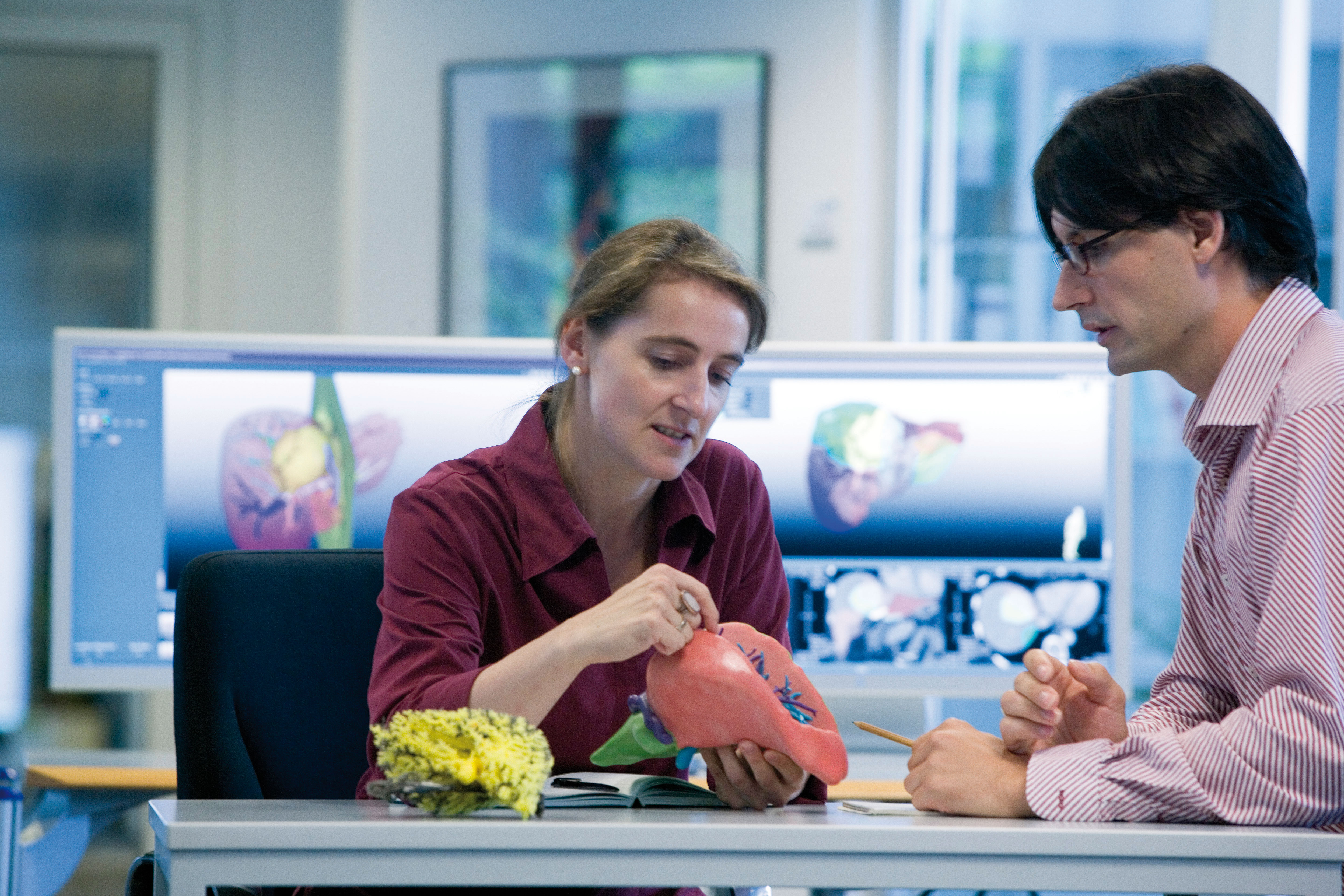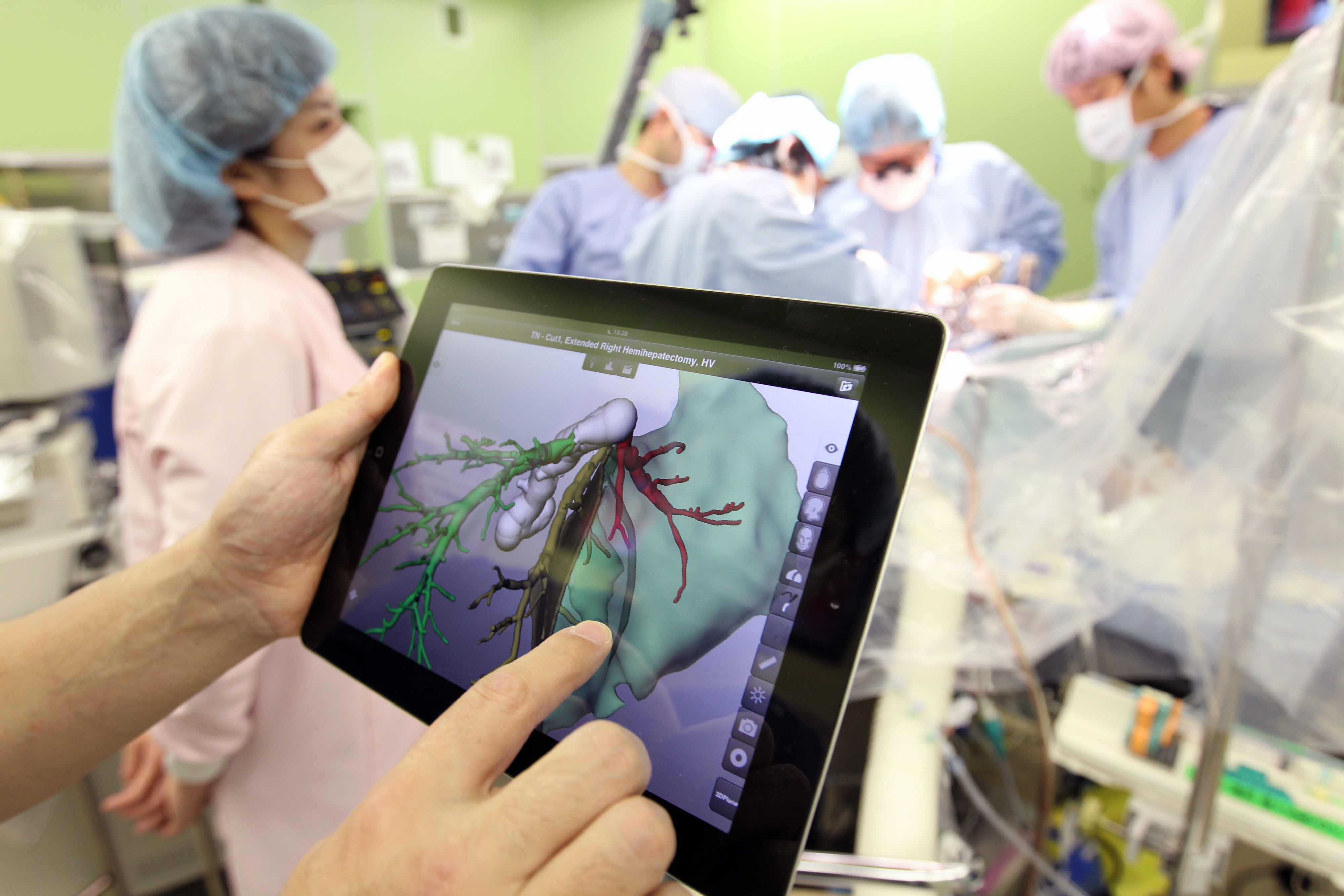Clinical Challenges
There are several risks during liver surgery, with liver failure being the most severe. Major risk factors include the volume of the remnant liver after surgery as well as the health of the remaining liver tissue. For oncologic resections, the tumor safety margin presents another risk and is a critical marker for cancer recurrence and the success of the surgery. Unfortunately, the goal of having a large safety margin around the tumor is contradictory to the aim of saving as much healthy liver tissue as possible, especially in the context of keeping the resection procedure simple. These risk factors, added to the complexity of the liver vasculature, motivated the development of a patient-specific, computer-assisted planning platform at Fraunhofer MEVIS.
 Fraunhofer Institute for Digital Medicine MEVIS
Fraunhofer Institute for Digital Medicine MEVIS

